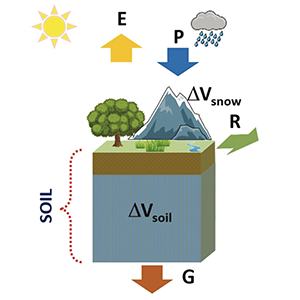The Nationwide Water Budget Estimation in the light of the New Permeability Map of Italy

All claims expressed in this article are solely those of the authors and do not necessarily represent those of their affiliated organizations, or those of the publisher, the editors and the reviewers. Any product that may be evaluated in this article or claim that may be made by its manufacturer is not guaranteed or endorsed by the publisher.
Accepted: 26 September 2022
Authors
The hydrological budget is one of the fundamental tools for the sustainable management of water resources. In the last decades, the knowledge of the distribution of freshwater resources in space and time is becoming of great concern due to the growing pressure related to increasing population, water pollution, and climate change. Furthermore, in the scope of hydrological balance, the estimation of aquifer assumes particular concern in Italy. In fact, more than 80% of water withdrawal for domestic and drinkable use is derived from groundwater. In this context, the Italian Institute for Environmental Protection and Research (ISPRA) has developed a mathematical model for estimating the hydrological budget components at a national and macro-regional scale called BIGBANG. The aquifer recharge is estimated as a percentage of the monthly soil water surplus by the potential infiltration coefficient defined as a function of the permeability of the hydrogeological complexes beneath the soil layer. In this paper, a comparison highlighting the differences between the estimations of the long-term annual average of two of the main hydrological budget components, aquifer recharge and surface runoff, at national and sub-national levels, is carried out. The estimations are based on the new and more detailed Permeability Map of Italy produced by ISPRA and on the old map of the hydrogeological complexes currently used at national level used so far in the BIGBANG budget model.
How to Cite

This work is licensed under a Creative Commons Attribution-NonCommercial 4.0 International License.












